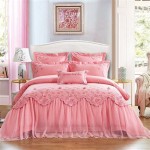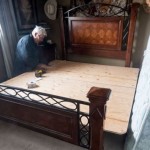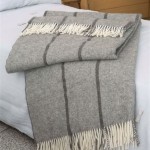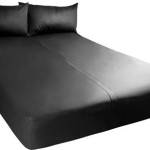What Wood For Bed Base: A Comprehensive Guide
Choosing the right wood for a bed base is crucial for both the structural integrity and aesthetic appeal of the bed. Different wood types offer varying levels of durability, cost-effectiveness, and visual appeal. This guide explores various wood options available for bed bases, highlighting their key characteristics to help inform your decision.
Solid Wood Options
Solid wood remains a popular choice for bed bases due to its strength, durability, and timeless appeal. It contributes to a robust and stable foundation for the mattress, promising longevity. Several solid wood varieties are commonly used:
* Pine: A cost-effective softwood known for its lightweight nature and ease of workability. While less durable than hardwoods, pine offers a classic aesthetic and takes stain well. * Cedar: Naturally aromatic, cedar is known for its insect-repelling properties. Its distinct reddish hue lends warmth to a bedroom's décor. Cedar is also a softwood, requiring careful consideration for high-stress applications. * Oak: A hardwood renowned for its strength and resistance to wear and tear. Oak offers a classic, elegant look and comes in various shades, from light browns to reddish hues. Its density contributes to its higher price point. * Maple: Another hardwood option, maple is known for its smooth, fine grain and resistance to dents and scratches. Maple's lighter color makes it a versatile choice for various bedroom styles. * Cherry: A premium hardwood featuring a rich, reddish-brown color that deepens with age. Cherry is known for its durability and elegant appearance, making it a desirable but often more expensive choice. * Mahogany: A luxurious hardwood with a deep, reddish-brown color and excellent durability. Mahogany's unique grain patterns add a touch of sophistication to any bedroom. Its premium status reflects a higher cost.
Engineered Wood Alternatives
Engineered wood offers an alternative to solid wood, often at a lower price point. These materials are manufactured by combining wood particles with adhesives, resulting in products with specific properties:
* Plywood: Constructed from thin layers of wood veneer glued together, plywood provides good strength and stability. It is commonly used in bed base construction for its cost-effectiveness and reliable performance. * Medium-Density Fiberboard (MDF): Made from wood fibers bonded with resin and compressed, MDF offers a smooth, uniform surface ideal for painting. It is often less expensive than plywood but can be susceptible to moisture damage. * Particleboard: Manufactured from wood chips and sawdust mixed with resin and compressed, particleboard is a less expensive option but generally less durable than plywood or MDF. It is often used for less visible parts of bed frames.
Factors to Consider When Choosing Wood
Selecting the right wood involves considering various factors beyond aesthetics and cost:
* Durability: Hardwoods generally offer greater durability than softwoods, resisting dents, scratches, and wear over time. * Cost: Softwoods and engineered wood options are typically more budget-friendly than hardwoods. * Aesthetics: Consider the wood’s color, grain pattern, and how it complements the overall bedroom décor. * Maintenance: Different woods require varying levels of maintenance. Some may require regular polishing or sealing to preserve their appearance. * Weight Capacity: Ensure the chosen wood can support the combined weight of the mattress, bedding, and occupants.
Sustainability and Sourcing
Considering the environmental impact of wood choices is increasingly important. Look for certifications like the Forest Stewardship Council (FSC) label, which indicates that the wood comes from responsibly managed forests.
* FSC Certification: Choosing FSC-certified wood supports responsible forest management practices, ensuring environmental protection and social responsibility. * Reclaimed Wood: Utilizing reclaimed wood from old structures or furniture minimizes environmental impact and adds a unique character to the bed base.
Finishing and Treatment
The finish applied to the wood impacts both its aesthetics and protection:
* Stains: Stains enhance the natural beauty of the wood and can be used to achieve a desired color. * Sealants: Sealants protect the wood from moisture, spills, and other damage. * Paints: Paint provides a protective layer and allows for a wide range of color customization.
Construction and Design
The construction of the bed base significantly influences its strength and stability:
* Slats vs. Solid Base: Slats offer better ventilation for the mattress while a solid base provides a firmer foundation. * Center Support: A center support beam, especially for larger beds, enhances stability and prevents sagging. * Joinery Techniques: Strong joinery methods, such as dovetail joints or mortise and tenon joints, contribute to the bed base’s durability.
:max_bytes(150000):strip_icc()/diycandy-97114db35d884d62b464a51cd9e1e9f9.jpg?strip=all)
21 Diy Bed Frames You Can Build Right Now

Hardwood Bed Base Barossa N Made 100 Organic Organature

Bed Slats Vs Plywood Which Is Best For Your Frame
:max_bytes(150000):strip_icc()/apieceofrainbow-a4ac6d2cd6dc4b9694e33e80592b797f.jpg?strip=all)
21 Diy Bed Frames You Can Build Right Now

Diy Bed Frame Wood Headboard 1500 Look For 200 A Piece Of Rainbow

Eva Timber Bed Frame Wooden Base

N Made Solid Timber Bed Frame Quokka Beds

Diy Bed Frame Wood Headboard 1500 Look For 200 A Piece Of Rainbow

Natural Wooden Platform Bed Bear Mattress

Solid Wood Bed Frame Species Pros And Cons Design Ideas







